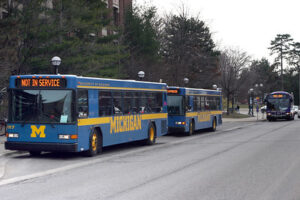New York’s community colleges will be eliminating administrators and staff to manage $35M in proposed budget cuts this year. The same institutions will cut an additional $11M in expenses next year.
New York Governor Andrew Cuomo proposed a $70M budget cut for SUNY in response to state revenue losses related to COVID-19. Cuomo cited declining enrollment at community colleges to justify the funding cuts. The State University of New York (SUNY) administers New York’s community colleges. SUNY as seen a 10-year trend of enrollment declines at its community colleges. In the past decade, community college enrollment has dropped by 16%.
Since the pandemic began, overall enrollment at New York community colleges dropped by 5.3%. If the Legislature enacts the cuts as planned, the SUNY community colleges will absorb half of the $70M reduction planned for the SUNY system.
The revenue picture in New York is bleak. The state expects to lose $11.5 billion in revenue in the current fiscal year and almost $10 billion next year. State budget officials expect the pandemic to reduce state revenues by $39 billion over four years.
In New York, community colleges receive funding from State and county budgets, and student tuition. Initially, the State of New York provided 40% of a community college’s total budget. Later, the State of New York changed that commitment level to fund “up to” 40% of a school’s annual revenues. The system provides a per-student subsidy. However, complex system of “chargebacks” can reduce a schools budget when a community college’s enrollment drops after the state appropriation is approved. Reductions in state funding are not always offset by increases in funding at the county level, or through increases in student tuition and fees.
State funding formula enforces hard choices
While New York’s community colleges rely more heavily on funding from the state using a per-student formula, the scenario brings up an interesting point. The State of New York is using community college enrollment declines to justify decreases to higher education funding. In this scenario, prioritizing instruction means eliminating administrators.
Michigan’s state funding formula is more nuanced and doesn’t neatly reduce to a per-student amount. Instead, the current State funding formula includes a base appropriation and considers contact hours, performance improvement, completion numbers, completion rates, administrative costs, local strategic value, and subsidy for districts with the lowest taxable property values.
COVID-19-based enrollment declines could impact several elements of Michigan’s community college funding formula. Contact hours, performance improvement, completion numbers, and completion rates could all decline based on COVID-19. These declines could, in turn, reduce the state appropriation for community colleges.
Washtenaw Community College receives roughly 15% of its funding from the State of Michigan in any given year. Based on the massive number of certificates that WCC churns out in any given year, it appears to game the state funding formula to maximum effect. The pandemic change that strategy.
Gaming the funding formula could mean eliminating administrators
But if maximizing state funding is a WCC goal, there are three ways to prop up that effort. First, maximize the number of students enrolled in classes. The free community college programs should help with that, but “free community college” is something WCC could have offered long ago. The WCC administration should maximize the use of federal financial aid for low-income students instead of diverting taxpayer dollars to sure-fire “investments” like the Health and Fitness Center. If nothing else, increasing the number of contact hours will have the most positive impact on the state funding formula.
Second, improving graduation rates would also have a positive impact on state funding. Community college graduation rates are elusive. Many students don’t enroll with the end-goal of getting a degree. For example, students may start at a community college and transfer their earned credits to a four-year institution to meet requirements for a four-year degree.
But credit transfers can work both ways. “Reverse transfers” allow community college students who transfer to a four-year institution without earning a two-year degree to send their university credits back to their community college for the purpose of completing a certificate or a two-year credential. This strategy enables the community college to improve completion rates even though the student has moved on.
Finally, the state does reward reducing administrative costs, although that may mean eliminating administrators. WCC’s administrative costs have increased substantially in the past decade. This is due, in part, to the equally substantial increase in the size of the WCC administration. If the WCC Board of Trustees is serious about maximizing WCC’s state funding, it should be asking hard questions like, “Why do we need 10 Vice Presidents?”
Photo Credit: Martin Gee , via Flickr




























